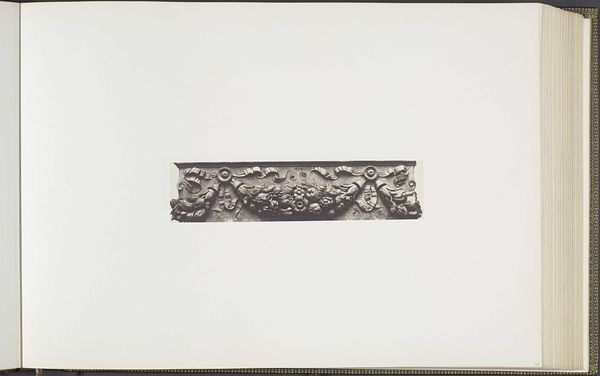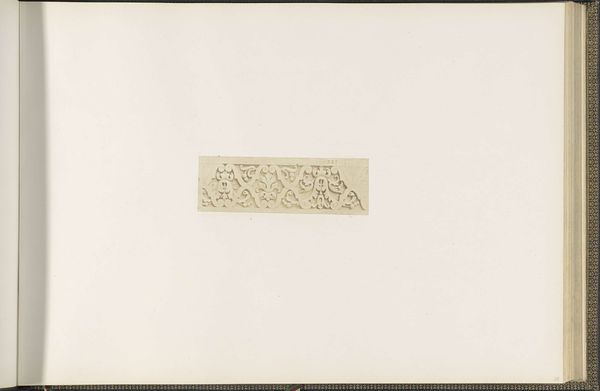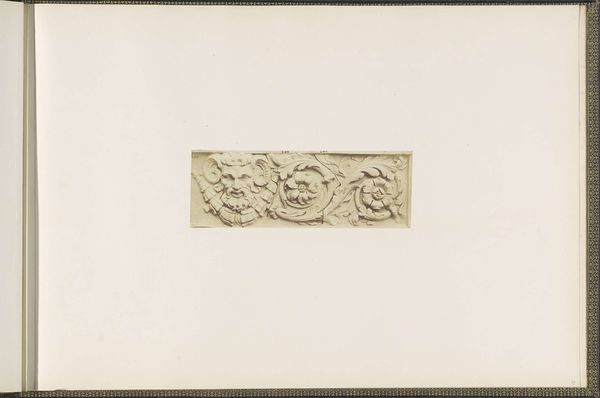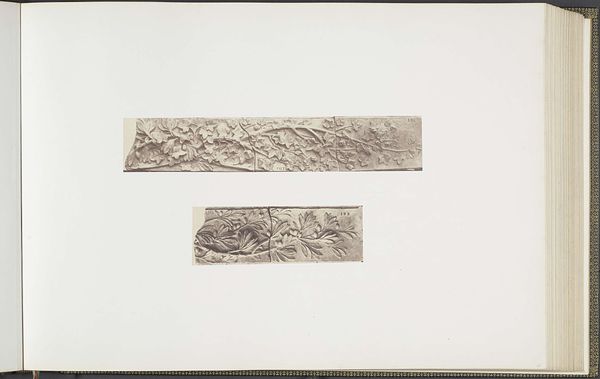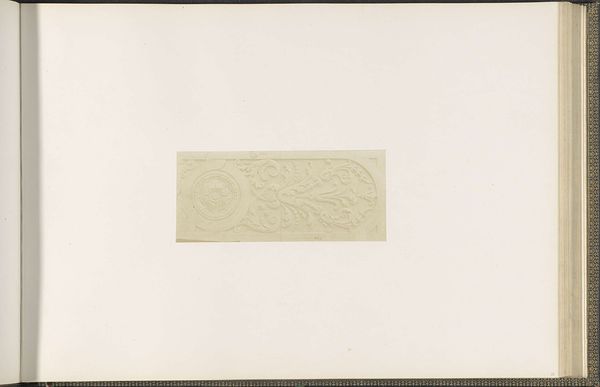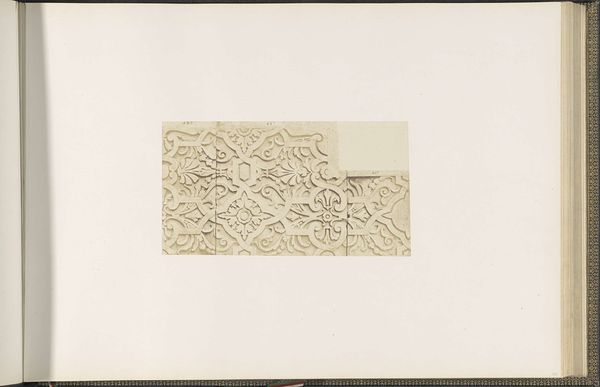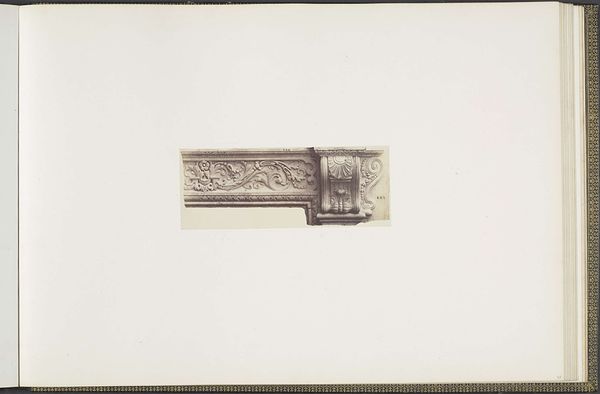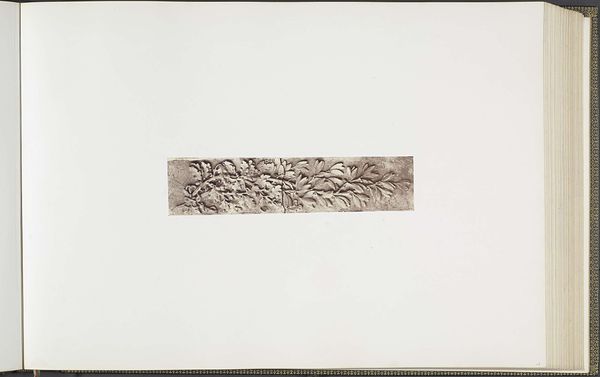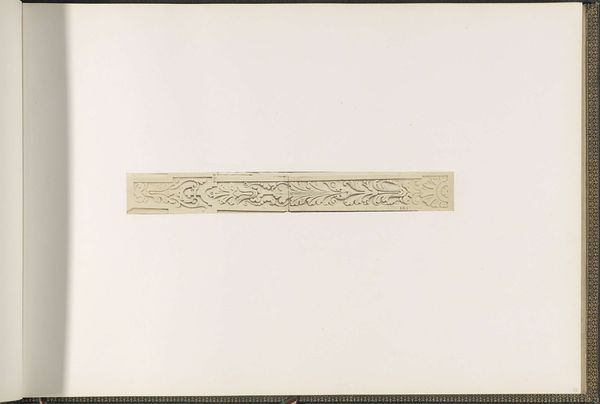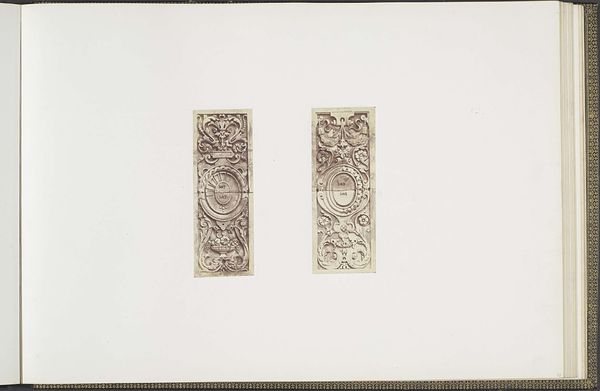
Gipsmodel voor een versiering met bladeren op het Palais du Louvre c. 1855 - 1857
0:00
0:00
edouardbaldus
Rijksmuseum
print, photography
#
portrait
#
neoclacissism
# print
#
photography
Dimensions: height 378 mm, width 556 mm
Copyright: Rijks Museum: Open Domain
This is Edouard Baldus’ photograph of a plaster model intended to ornament the Palais du Louvre, likely dating from the mid-19th century. It shows a strip of plaster with a repeating pattern of leaves, grapes, and flowers. The Louvre was not just a museum, but a powerful symbol of French national identity and artistic achievement. Under Napoleon III, extensive renovations sought to project an image of imperial grandeur and cultural authority. Baldus was commissioned to document these changes. His photographs weren't mere records; they helped shape the narrative of progress and imperial power. The use of classical motifs reflects the conservative aesthetic favored by the regime. By studying Baldus’ work in the archives, we can learn about the values and ambitions of this era and how institutions helped to promote them. The interpretation of art is always contingent on its social and institutional context.
Comments
No comments
Be the first to comment and join the conversation on the ultimate creative platform.
